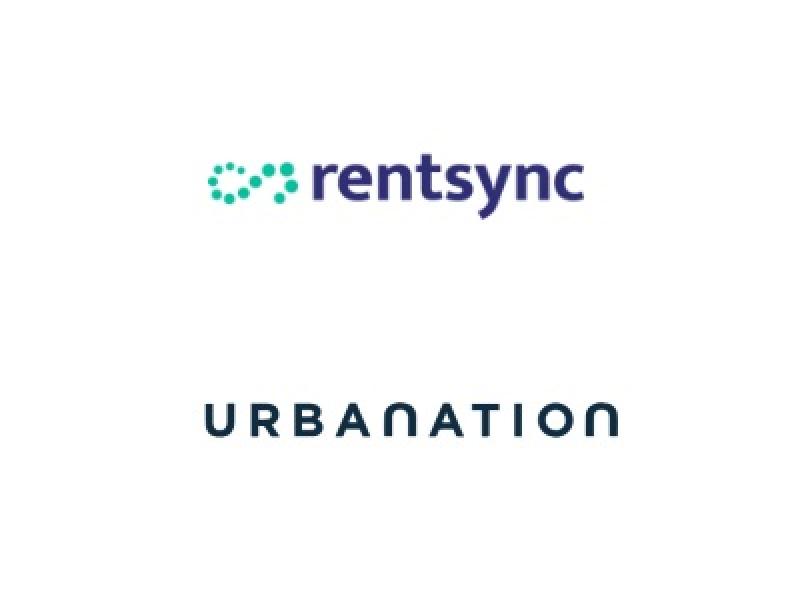
Panelists discuss the performance of the Canadian apartment multifamily sector during the Canadian Apartment Investment Conference on Sept. 22. (Steve McLean, RENX, screengrab from CAIC panel)
COVID-19 has had a major effect on all aspects of society, and multiresidential rental and vacancy rates haven’t escaped its clutches.
Starlight Investments executive director of asset management and marketing Michael Hanak moderated a five-member panel which explored the impact of the pandemic and provided an outlook on what might be expected in the future at the Canadian Apartment Investment Conference on Sept. 22.
Hanak and the panellists outlined the performance of their portfolios, breaking down the results by regions and asset types. They also outlined specific issues which they’ve had to deal with during the ongoing pandemic.
McEvay Blair Multifamily Group
James Blair is the senior vice-president of Vancouver-based McEvay Blair Multifamily Group at Marcus & Millichap, which has amassed more than $1 billion of investment sales volume. He said the city’s vacancy rate rose from one to 2.8 per cent during the pandemic and rents moved lower.
The vacancy rate jumped from less than one per cent to 13 per cent around The University of British Columbia, which wasn’t a surprise as the pandemic shut down classes and heavily impacted the large student population — particularly international students — which live around the campus.
Vancouver’s South Granville area is home to younger people who wanted or needed to live close to downtown, and the vacancy rate there jumped from near zero to almost two per cent, according to Blair.
Urban Vancouver vacancy rates are now coming down, Blair noted, though “the market is still fairly price-sensitive in a lot of cases.”
There was a shift to smaller and suburban markets throughout B.C., including Kelowna, Vernon, Kamloops, Penticton and the Thompson-Okanagan Region, where Blair said vacancy dropped from two to three per cent to below one per cent.
Vancouver Island’s Nanaimo, Parksville and Campbell River also saw vacancy rates drop and rents increase, he added.
QuadReal Property Group
QuadReal Property Group is a Vancouver-headquartered real estate investment, operating and development company with $61.2 billion in assets under management.
It has a sizeable concentration of properties in Vancouver, Calgary and Toronto. Senior vice-president of residential operations Dean Holmes said suburban assets in all three markets held up very well through the pandemic as turnover remained low and leasing velocity remained strong.
There was considerably higher turnover in the urban areas of the three markets due to migration to the suburbs, according to Holmes.
Occupancy bottomed out in March, but Holmes said things have since come roaring back — particularly in Vancouver, where they’re back to pre-pandemic levels in the high-90 per cent range.
“Our leasing velocity across the portfolio is about 20 per cent greater over the last three or four months than what it was pre-pandemic,” said Holmes. “We’re seeing a big return to normalcy.”
The Calgary rental market continues to struggle, owing in part to plenty of new supply coming on to the market. Rental incentives have become common.
Holmes said QuadReal assets in Kitchener and Cambridge performed well at the expense of its downtown Toronto properties. Those assets struggled during the pandemic but are now making a comeback due to increasing numbers of people returning to offices and universities, as well as increasing immigration.
Rents incoming tenants pay, compared to outgoing tenants in those units, are showing double-digit growth in Vancouver and are a little below 10 per cent in Toronto, but are still negative in Calgary compared to pre-pandemic rent levels, according to Holmes.
Realstar Group
Realstar Group is a private real estate investment and management company formed in 1974 with more than $7 billion of assets, including more than 25,000 rental units across Canada.
The Toronto-headquartered firm owns approximately 3,000 suites in B.C. and vice-president of asset management Hedayat Nasoody has seen robust activity on Vancouver Island, outside of downtown Victoria, which showed some weakness.
“Downtown Vancouver has been a struggle for us,” he said. “The product we own in downtown Vancouver is in the $3- to $4-per-square-foot range, and that’s the type of product that has seen weakness.”
While rents fell from five to 10 per cent in reasonably new buildings in Vancouver, Nasoody said that was balanced out by the strong performance of Langford and Nanaimo, which experienced rental growth of 10 per cent or more.
Kelowna has also been robust with tight vacancy rates and healthy rents, according to Nasoody.
Rents have fallen by 10 per cent or more in Edmonton, where incentives are being used. Conversely, Nasoody said Calgary and nearby Airdrie have performed well and experienced a five per cent rent increase over last year.
Ontario secondary markets including Oshawa, Cobourg, Belleville and Owen Sound have seen big rent increases while urban downtown properties have weakened, according to Nasoody.
Quebec has been very steady with rent increases of two to five per cent while the Maritime provinces have remained very strong, said Nasoody.
“The beauty of going into 2022 is that there isn’t a market that we feel is going to deteriorate, including Alberta,” he concluded. “We’re optimistic. With the rent freezes in B.C., Ontario and Nova Scotia set to end at the end of this year, we’ll have rent renewal increases again.”
Fiera Real Estate
Fiera Real Estate is an investment management company with offices in North America and Europe. It had 346 properties valued at $5.3 billion US under management at the end of June.
Vice-president of asset management Erin Shirley-Wong said the company’s Halifax portfolio has had rental rate growth and strong occupancy with little turnover. Lease-ups have been quick when tenants do move out.
There’s been some weakness in Toronto and Ottawa, according to Shirley-Wong, but Vancouver rents and occupancy have performed well.
“I don’t know how many more months we’re out until that price sensitivity starts to sway a little more again towards interest in the amenity space and the willingness to pay a little bit more to get a higher-finished unit or a building that has more amenities within it,” said Shirley-Wong.
“I suspect throughout 2022 we may start to see that demand increase a little bit.”
Colliers
While Colliers doesn’t own properties, the professional services and investment management company has been involved with 54,000 lease and sale transactions and manages approximately two billion square feet worth of assets valued at $45 billion.
Senior director of national research and analytics for Canada Roelof van Dijk said rental demand was hit in downtowns across Canada when people lost jobs in entertainment industries or weren’t going to office buildings.
“If you’re not using the amenities that are downtown, why pay the rent when your lease comes up? We saw a lot of people move out to the suburbs. We saw a lot of people doubling up. We saw people move back in with their parents.”
Some young professionals who moved out of downtowns saved money and are now moving back to rent or buy condominiums in anticipation of returning to the office. van Dijk expects downtown demand to trickle back over the next year and drive down vacancies.
“Vacancy rates have moved up, but they’ve moved up from ridiculously low levels in many of these markets,” he said.
Starlight Investments
Toronto-based Starlight Investments has $20 billion of assets under management, including 60,000 multifamily units valued at $16 billion in Canada.
Hanak singled out Kitchener as being a hot leasing location in Ontario. Nanaimo and Victoria have experienced similar demand in B.C., with lease-ups taking just a few months.
“There’s demand out there for good rental product,” said Hanak. “We’re definitely on the upswing. We’re seeing it in many markets. Are we all the way there? No, but everything is trending in the right direction.
“There’s still a supply issue, and there will continue to be, but the demand is there. We feel that the rest of this year will be good.”











